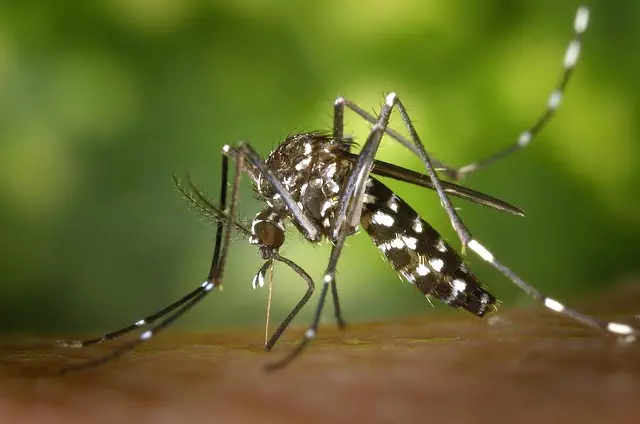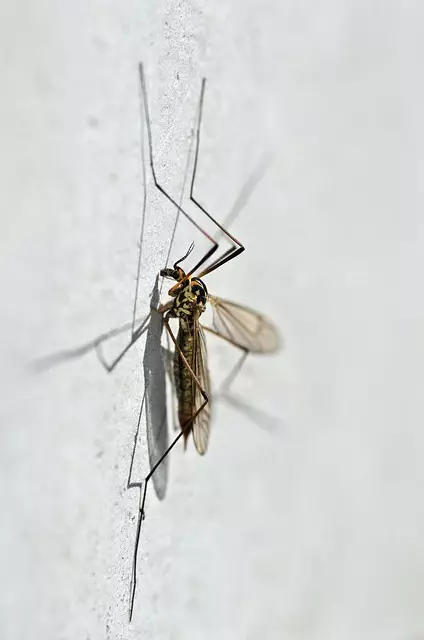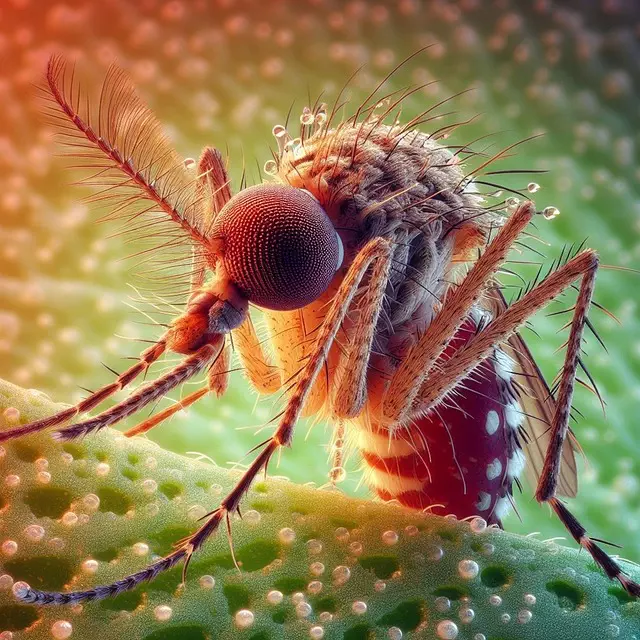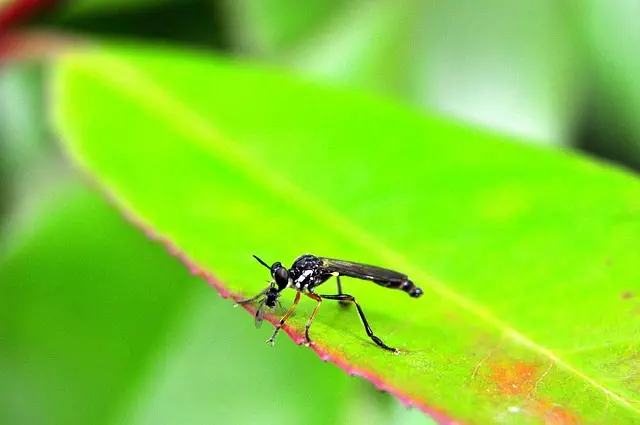Mosquitoes, despite their small size, pose a significant health threat due to rapid reproduction and disease vectoring. Effective mosquito control requires understanding their behavior, breeding patterns, and life cycle stages. Targeted strategies involve resting area identification, feeding times, and water source management for trapping systems. Traditional methods like spraying insecticides have drawbacks, driving the need for sustainable solutions like Integrated Pest Management (IPM) and mosquito traps. These traps use CO2, light, and scent to attract and capture mosquitoes, offering a more targeted and environmentally friendly approach compared to chemical pesticides. Advanced mosquito control technologies include smart monitoring systems, genetic engineering, biopesticides, and plant-based repellents, aiming for long-lasting relief from mosquito-borne diseases in diverse environments.
Mosquitoes are more than just a nuisance; they pose significant health risks, transmitting diseases that affect millions globally. Understanding these vectors’ behavior and breeding patterns is crucial for effective mosquito control. Traditional methods, while widespread, often have limited success due to their inability to target specific populations. This has spurred the development of innovative mosquito trapping systems, offering a more precise approach to managing these insects. This article explores these systems, their functionality, benefits, and real-world applications, shedding light on why they’re becoming essential tools in the fight against mosquito-borne diseases.
Understanding Mosquitoes: Behavior and Breeding Patterns

Mosquitoes are tiny yet tenacious creatures that pose a significant threat to human health and well-being, particularly in terms of mosquito control. Understanding their behavior and breeding patterns is crucial when developing effective mosquito trapping systems. These insects are known for their rapid reproduction, with female mosquitoes laying hundreds of eggs at a time, often in stagnant water sources like ponds, marshes, or even small pools left by rainfall. This rapid multiplication makes them a persistent nuisance and a potential vector for various diseases.
Their behavior is intricately linked to their life cycle, which includes four stages: egg, larva, pupa, and adult. During the day, mosquitoes rest in dark, secluded areas, while they become most active at dawn and dusk, when they feed on both humans and animals. This knowledge allows for strategic placement of trapping systems during peak activity periods. By targeting these behavioral patterns, mosquito control measures can be more efficient, reducing their population and minimizing the risk of disease transmission.
Traditional Mosquito Control Methods: Their Limitations

Traditional mosquito control methods, such as spraying insecticides and using chemical repellents, have long been the go-to solutions for managing mosquito populations. However, these approaches come with significant limitations that highlight the need for more advanced strategies. One of the primary concerns is their environmental impact; chemical pesticides can harm non-target organisms, including beneficial insects, birds, and aquatic life, disrupting local ecosystems.
Additionally, these methods often provide only temporary relief and fail to address the root causes of mosquito presence. For instance, standing water, which serves as a breeding ground for mosquitoes, isn’t always easily identifiable or accessible for treatment, leading to recurring issues despite chemical interventions. As such, there’s an increasing recognition of the importance of integrated pest management (IPM) approaches that go beyond chemical solutions, focusing on more sustainable and comprehensive methods like mosquito trapping systems.
The Need for Effective Mosquito Trapping Systems

In many parts of the world, mosquitoes pose a significant threat to public health and well-being. They are vectors for various diseases, including malaria, dengue fever, Zika virus, and West Nile virus, which affect millions of people annually. Traditional methods of mosquito control, such as spraying pesticides and using insecticides, have limited effectiveness and can have negative environmental impacts. Therefore, there is a growing need for innovative solutions like effective mosquito trapping systems to combat this persistent problem.
Mosquito trapping offers a more targeted and environmentally friendly approach to mosquito control. These advanced systems use various techniques, including CO2 attraction, light sources, and specific scents, to draw mosquitoes in and capture them. By employing these methods, trapping systems can significantly reduce mosquito populations in treated areas, providing relief for communities suffering from mosquito-borne diseases. Moreover, they offer a more sustainable alternative, minimizing the reliance on chemical pesticides and promoting a healthier ecosystem.
How Mosquito Trapping Works: Science Behind It

Mosquito trapping systems are an innovative approach to mosquito control, employing scientific principles to attract, capture, and eliminate these pests. The process typically involves using a combination of carbon dioxide (CO2), light, and water to mimic the natural cues that mosquitoes use to find hosts. Mosquitoes are naturally drawn to CO2, which is exhaled by living organisms, and certain wavelengths of light. Modern traps release these substances from artificial sources, luring mosquitoes into a confined space where they become trapped, often due to a fine mesh or other physical barriers.
Once inside the trap, mosquitoes struggle to fly away due to the design of the enclosure, which can include fan systems that draw them in but prevent escape. Water is often added to the trap as a killing agent, either through a spout that creates a shallow pool or by coating the interior with a water-based solution. This dual approach of physical containment and liquid elimination ensures efficient mosquito control, making these systems a valuable tool for both residential and commercial Mosquito Control efforts.
Types of Mosquito Trapping Systems: A Comparative Analysis

Mosquito trapping systems have evolved significantly, offering diverse approaches to mosquito control. Each system utilizes unique methods and technologies to attract, capture, and eliminate mosquitoes, catering to various environmental and operational needs. One prominent category is the light-based trap, which uses ultraviolet (UV) or visible lights to draw mosquitoes in. These traps often emit specific carbon dioxide (CO2) concentrations to mimic human respiration, creating an irresistible attraction for mosquitoes seeking blood meals.
Another type employs chemical attractants, releasing combinations of heat, moisture, and odor lures that are hard for mosquitoes to resist. These traps can be particularly effective in targeting specific mosquito species known to respond to particular chemical cues. In contrast, physical trapping methods rely on net or fan systems that capture mosquitoes as they fly, blocking their escape routes. While less selective than chemical or light-based traps, physical systems can be highly efficient in enclosed spaces like indoor environments. Additionally, some modern trapping systems integrate smart technologies, such as sensors and automated mechanisms, to enhance efficiency and reduce maintenance requirements, further advancing the field of mosquito control.
Advantages of Implementing Mosquito Trapping Solutions

Implementing mosquito trapping solutions offers numerous advantages, significantly contributing to effective mosquito control. These systems provide a more targeted and environmentally friendly approach compared to traditional pest control methods. By attracting, capturing, and eliminating mosquitoes at their breeding grounds, traps help reduce the overall mosquito population in an area. This results in decreased risk of diseases spread by these insects, such as malaria, dengue fever, and Zika virus.
Moreover, mosquito trapping systems are highly adaptable and can be customized for various settings, from residential backyards to large urban parks and industrial sites. Their silent operation ensures minimal disruption to daily activities, making them ideal for public spaces where people gather. Additionally, these solutions promote a more sustainable ecosystem by reducing the need for chemical pesticides, thereby minimizing environmental pollution and potential harm to non-target species.
Case Studies: Successful Mosquito Management Using Traps

Successful mosquito management using traps has been seen in various case studies worldwide, demonstrating their effectiveness as a Mosquito Control measure. One notable example is the implementation of CO2-based mosquito traps in urban areas with high mosquito populations. These traps, baited with carbon dioxide and heat, attract mosquitoes and capture them, significantly reducing local mosquito counts within weeks of deployment. Research has shown that this method can be highly successful in decreasing the incidence of mosquito-borne diseases, such as dengue fever and Zika virus, in densely populated cities.
Another successful case involves the use of light and odor traps in rural agricultural settings. By combining ultraviolet lights with specific chemical odors known to attract mosquitoes, these traps have been effective in protecting crops from mosquito pests that can transmit diseases to livestock. This approach not only helps maintain agricultural productivity but also reduces the risk of disease transmission to humans living nearby. These case studies illustrate the versatility and efficacy of trapping systems as a powerful tool in Mosquito Control efforts across diverse environments.
Future Trends and Innovations in Mosquito Control Technology

The future of mosquito control looks promising with several technological innovations on the horizon. One prominent trend is the development of smart and interconnected mosquito monitoring systems. These advanced devices use sensors, AI, and machine learning algorithms to detect and track mosquito populations in real-time, allowing for more precise and targeted interventions. By analyzing data from these systems, researchers can predict and identify areas prone to high mosquito activity, enabling proactive measures to protect communities.
Additionally, genetic engineering and biotechnology offer new avenues for mosquito control. Scientists are exploring ways to develop genetically modified mosquitoes that are resistant to diseases or have reduced reproductive capabilities. This approach aims to disrupt the breeding cycle and overall population dynamics of mosquito species. Furthermore, biopesticides and natural repellents derived from plants are gaining attention as safer and more environmentally friendly alternatives to chemical pesticides. These innovations hold great potential for transforming mosquito control practices in the coming years, leading to healthier and more sustainable environments.
